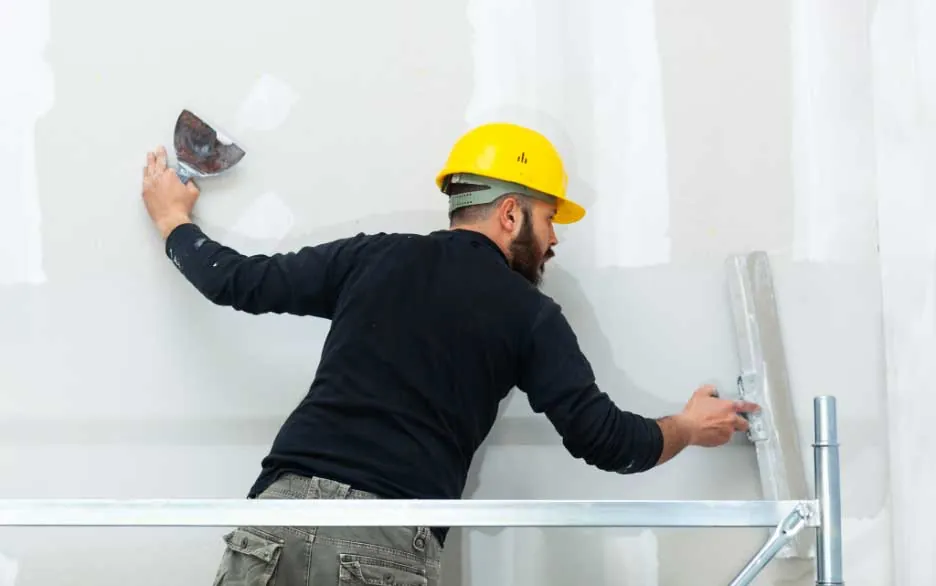Efficient Drywall Repair Techniques to Recover Your Wall surfaces
Efficient Drywall Repair Techniques to Recover Your Wall surfaces
Blog Article
Drywall Installment Made Easy: Tips for Perfect Results
Drywall installment is commonly viewed as a daunting job, yet with the best method and knowledge, it can end up being a manageable venture. Mastering methods for reducing, hanging, and finishing drywall can considerably influence the outcome.
Picking the Right Materials
Choosing the ideal materials for drywall setup is crucial to attaining a resilient and visually pleasing finish. sheetrock repair fort worth. The primary component, drywall sheets, usually can be found in various densities, with 1/2-inch sheets being typical for interior walls. For locations calling for additional moisture resistance, such as kitchens or shower rooms, consider utilizing green board or cement board, which are specifically made to withstand humidity

In addition, picking the appropriate bolts-- either nails or screws-- is essential for securing the drywall to the framework. Drywall screws are usually preferred for their holding power and minimized danger of popping. Think about the finishing touches such as primer and paint, which not only enhance the appearance however also protect the drywall from moisture and wear.
Preparing the Installment Area
Prior to beginning the drywall installment process, it is necessary to prepare the installation location thoroughly. A clean work space lessens the risk of damages to existing things and allows for reliable movement during setup.
Following, inspect the wall surfaces and ceiling for any kind of flaws, such as splits, openings, or mold. Address these problems beforehand; patch any kind of problems and allow adequate time for repairs to dry. Additionally, make sure that electric outlets, switches, and plumbing are appropriately placed and accounted for, as this will affect drywall placement.
Think about the environmental conditions also. A stable temperature level and moisture degree are crucial for optimum bond and efficiency of the drywall materials. If needed, utilize a dehumidifier or heating unit to produce appropriate conditions.
Trimming and Hanging Drywall
The secret to effective drywall setup depends on the exact cutting and dangling of the panels. Begin by determining the area accurately, taking into consideration any blockages such as electric outlets or windows. Make use of a straight side and an utility knife to rack up the drywall along your dimensions, then snap it along the racked up line for a tidy break. For even more complex cuts, such as around outlets, a drywall saw can be utilized for accuracy.

Always function from the top down and left to right, making sure that you preserve a staggered pattern to enhance security. Properly hanging the drywall sets the structure for a smooth finish, eventually bring about remarkable outcomes in your drywall project.
Taping and Mudding Strategies
While proper cutting and dangling of drywall establishes the stage, the following crucial step includes understanding taping and mudding techniques to ensure a seamless surface. Insulation is essential for strengthening joints and protecting against cracks; it involves embedding tape right into the applied joint substance (mud) Start with a high quality fiberglass or paper tape, using the tape over the joint and pushing it right into the damp mud using a taping knife, making sure no air bubbles continue to be.
Once the tape is in location, apply a slim layer of joint substance over the tape, feathering the sides to develop a smooth change to the drywall surface area. Enable this layer to completely dry entirely prior to sanding it gently to get rid of blemishes. Repeat this process, applying additional layers of mud as necessary-- usually 2 to 3 layers-- while slowly broadening the application location with each layer to accomplish a seamless look.
After the final coat dries, sand the surface with a fine-grit sandpaper until smooth. drywall repair. Keep in mind to use a mask during sanding to stay clear of inhaling dust bits. Mastering these taping and mudding strategies is important for attaining a professional-quality coating in your drywall setup
Completing Touches for Perfection
Achieving a flawless drywall installment surpasses mudding and taping; it finishes in the completing touches that raise the overall appearance. These last actions are important in making sure a professional-grade finish that enhances the visual appeals of your space.
Begin by sanding the dried out joint compound to create a smooth surface area. Utilize a fine-grit sandpaper and a sanding block or pole sander for optimum control. Pay certain attention to corners and sides, as these areas tend to call for even more careful work. After fining sand, wipe down the wall surfaces with a moist cloth to get rid of any dirt particles, guaranteeing a tidy surface area for paint.
Next, use a primer particularly designed for drywall. This action is necessary, as it helps secure the joint substance and offers a consistent base for the topcoat. When the guide dries, check for any blemishes, and touch up as needed.
Verdict
In conclusion, successful drywall installment pivots on the mindful selection of products, thorough prep work of the setup area, and exact implementation of reducing and hanging strategies. Proficiency of taping and mudding right here procedures is crucial for achieving a smooth coating.
Drywall installment is often perceived as a challenging task, yet with the best method and knowledge, it can become a manageable undertaking.Picking the ideal products for drywall setup is vital to accomplishing a resilient and visually pleasing finish.Prior to beginning the drywall installment procedure, it is necessary to prepare the setup area thoroughly. Understanding these taping and mudding strategies is important for accomplishing a professional-quality coating in your drywall installment.
In verdict, successful drywall installation pivots on the cautious selection of products, complete preparation of the setup area, and precise implementation of cutting and hanging techniques.
Report this page